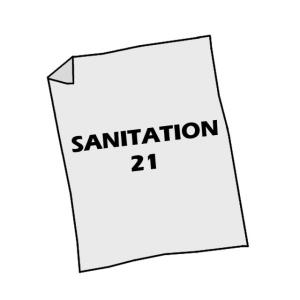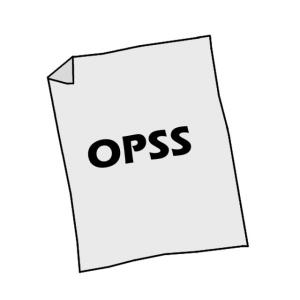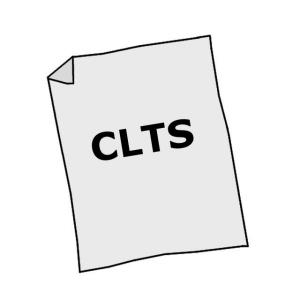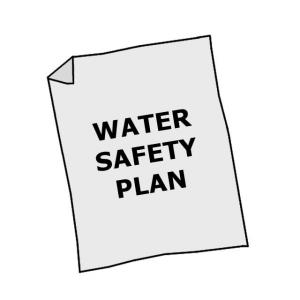Compost is the soil-like substance resulting from the controlled aerobic degradation of organics. Pit humus is the term used to describe the material removed from a double pit technology (double ventilated improved pit, fossa alterna or twin pits for pour flush toilets) because it is produced passively underground and has a slightly different composition than compost. Both products can be used as soil conditioners.
| In | Out |
|---|---|
Compost/Biosolids |
Food Products |
The process of thermophilic (high-temperature) composting generates heat (50 to 80° C), which kills the majority of pathogens present. The composting process requires adequate carbon, nitrogen, moisture, and air. The Double VIP, Fossa Alterna or Twin Pits for Pour Flush are ambient-temperature variations of high-temperature composting. In these technologies, there is almost no increase in temperature because the conditions in the pit (oxygen, moisture, C:N-ratio) are not optimized for composting processes to take place. Because of this, the material is not actually ‘compost’ and is, therefore, referred to as ‘pit humus’.
The texture and quality of the pit humus depends on the materials, which have been added to the excreta (e.g., soil added to a Fossa Alterna) and the storage conditions.
WHO guidelines on excreta use in agriculture (Volume IV) stipulate that compost should achieve and maintain a temperature of 50° C for at least one week before it is considered safe to use. Achieving this value, however, requires a significantly longer period of composting. For technologies that generate pit humus, a minimum of 1 year of storage is recommended to eliminate bacterial pathogens and reduce viruses and parasitic protozoa. WHO guidelines should be consulted for detailed information.
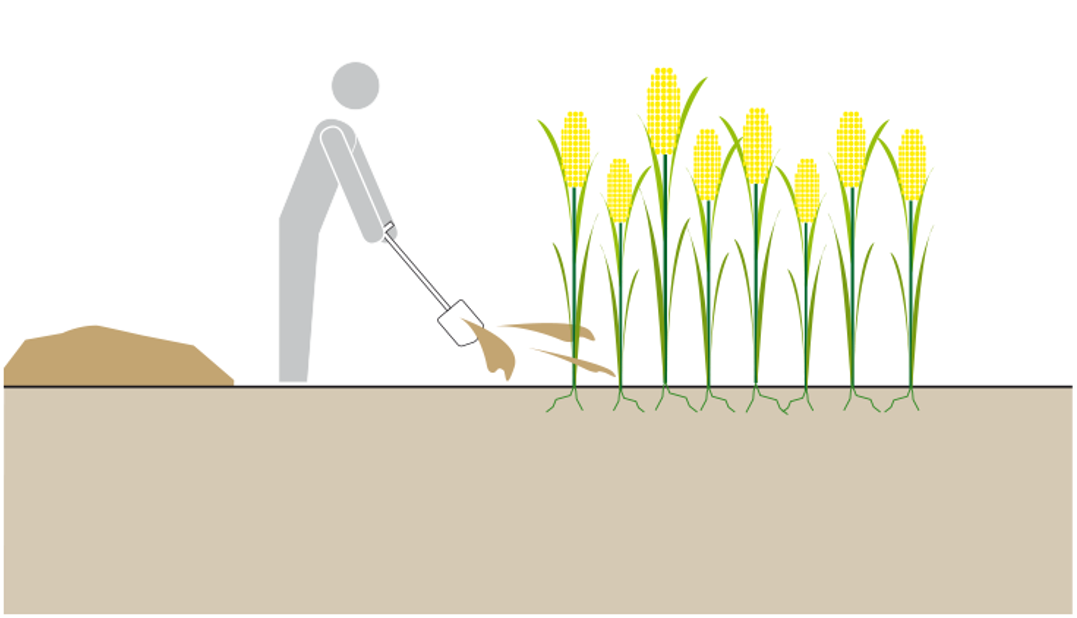
It has been shown that the productivity of poor soil can be improved by applying equal parts compost and top soil to it. The output from one Fossa Alterna should be sufficient for two 1.5 m by 3.5 m beds.
A small risk of pathogen transmission exists, but, if in doubt, any material removed from the pit or vault can be further composted in a regular compost heap before being used or mixed with additional soil and put into a ‘tree pit’, i.e., a nutrient-filled pit used for planting a tree (see also small and large-scale composting). Compost and pit humus should not be applied to crops less than one month before they are harvested. This waiting period is especially important for crops that are consumed raw.
As opposed to sludge, which can originate from a variety of domestic, chemical and industrial sources, compost and pit humus have very few chemical inputs (see also pathogens and contaminants and health risk management). The only chemical sources that could contaminate compost or pit humus might originate from contaminated organic material (e.g., pesticides) or from chemicals that are excreted by humans (e.g., pharmaceutical residues). Compared to the chemicals that may find their way into wastewater sludge, compost and pit humus can be considered as less contaminated.
Compost and pit humus are inoffensive, earth-like products. Regardless, people might refrain from handling and using them. Conducting demonstration activities that promote hands-on experience can effectively show their non-offensive nature and their beneficial use.
The material must be allowed to adequately mature before being removed from the system. Then, it can be used without further treatment. Workers should wear appropriate protective clothing.
Compost and pit humus can be beneficially used to improve the quality of soil. They add nutrients and organics and improve the soil’s ability to store air and water. They can be mixed into the soil before crops are planted, used to start seedlings or indoor plants, or simply mixed into an existing compost pile for further treatment. Vegetable gardens filled with pit humus from the Fossa Alterna have shown dramatic improvements over gardens planted without soil conditioner. The use of pit humus has even made agriculture possible in areas which otherwise would not have supported crops.
The Composting Toilet System Book
The Composting Toilet System Book is an impressive, comprehensive, reader friendly, and practical guide to choosing, planning and maintaining composting toilet systems for those seeking an alternative to traditional sewer and septic tank systems. It explains the technologies, sources, applications, greywater issues, and regulations relevant to a composting toilet system for the home, whether manufactured or site-built.
DEL PORTO, D. STEINFELD, C. (1999): The Composting Toilet System Book. A Practicle Guide to Choosing, Planning and Maintaining Composting Toilet Systems, an Alternative to Sewer and Septic Systems. Concord: Center for Ecological Pollution Prevention (CEPP)The Humanure Handbook
A comprehensive book on recycling human excrement without chemicals, high technology or pollution. Well written, practical, and thoroughly researched, this self-published book is built on nearly twenty years of experience by the author, who tells us about every aspect of dealing with excrement on the home-scale level. Only available for free as web book.
JENKINS, J. (2005): The Humanure Handbook. A Guide to Composting Human Manure. (= 3rd Edition ). Grove City: Joseph Jenkins Inc. URL [Accessed: 16.08.2010]An Ecological Approach to Sanitation in Africa: A Compilation of Experiences
This factsheet provides information and experiences of simple pit toilet and twin pit toilet. It also contains knowledge about upgrading technologies, hygiene and usage of faeces as fertilizer.
EcoSanRes (2008): An Ecological Approach to Sanitation in Africa: A Compilation of Experiences. (= EcoSanRes Factsheet 12 ). Stockholm: Stockholm Environment Institute (SEI)Toilets That Make Compost
This book describes in an easy-to-understand and picture-based way how to construct three different low cost sanitation solutions, namely arborloos, fossa alterna and urine diversion toilets.
MORGAN, P. EcoSanRes (2007): Toilets That Make Compost . Stockholm: Stockholm Environment Institute URL [Accessed: 09.05.2019]Ecological Toilets
This book describes how to construct Arborloo toilets and how it can be upgraded to VIPs at a later stage.
MORGAN, P. EcoSanRes (2009): Ecological Toilets. (pdf presentation). Stockholm: Stockholm Environment Institute URL [Accessed: 09.05.2019]Smart Sanitation Solutions
Smart Sanitation Solutions presents examples of low-cost household and community-based sanitation solutions that have proven effective and affordable. A wide range of innovative technologies for toilets, collection, transportation, treatment and use of sanitation products that have already helped thousands of poor families to improve their lives is illustrated.
NWP (2006): Smart Sanitation Solutions. Examples of innovative, low-cost technologies for toilets, collection, transportation, treatment and use of sanitation products. (= Smart water solutions ). Amsterdam: Netherlands Water Partnership (NWP) URL [Accessed: 09.05.2019]Faecal Sludge Management
This is the first book to compile the current state of knowledge on faecal sludge management. It addresses the organization of the entire faecal sludge management service chain, from the collection and transport of sludge, to the current state of knowledge of treatment options, and the final end use or disposal of treated sludge. It presents an integrated approach that brings together technology, management, and planning, based on Sandec’s 20 years of experience in the field. It also discusses important factors to consider when evaluating and upscaling new treatment technology options. The book is designed for undergraduate and graduate students, engineers, and practitioners in the field who have some basic knowledge of environmental and/or wastewater engineering.
STRANDE, L. ; RONTELTAP, M. ; BRDJANOVIC, D. (2014): Faecal Sludge Management. Systems Approach for Implementation and Operation. London: IWA Publishing URL [Accessed: 16.07.2014]Guidelines for the safe use of wastewater excreta and greywater. Volume IV. Excreta and Greywater Use in Agriculture
Volume IV of the Guidelines for the Safe Use of Wastewater, Excreta and Greywater recognizes the reuse potential of wastewater and excreta (including urine) in agriculture and describes the present state of knowledge as regards potential health risks associated with the reuse as well as measures to manage these health risks following a multi-barrier approach.
WHO (2006): Guidelines for the safe use of wastewater excreta and greywater. Volume IV. Excreta and Greywater Use in Agriculture. Geneva: World Health Organisation (WHO) URL [Accessed: 09.05.2019] PDF

